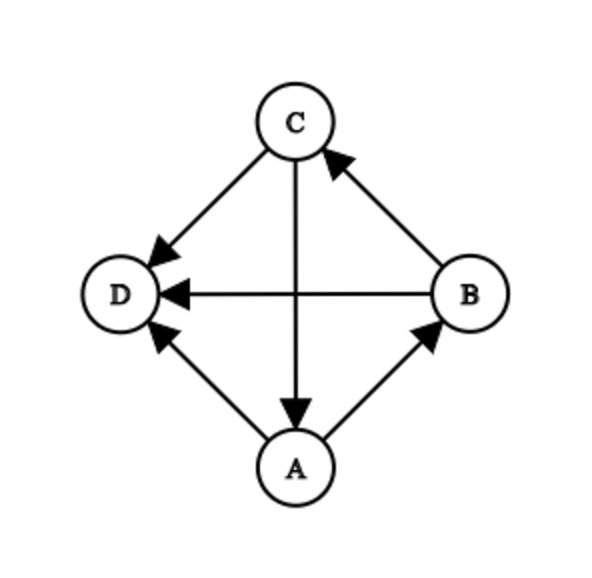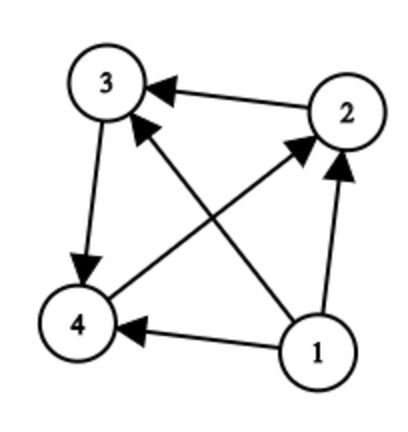Preparando MOJI
Due to the success of TWICE, JYP Entertainment has earned countless money and emerged as the biggest entertainment firm by market capitalization. Therefore, the boss, JYP, has decided to create a new nation and has appointed you to provide a design diagram.
The new nation consists of $$$n$$$ cities and some roads between them. JYP has given some restrictions:

JYP has given criteria for your diagram. For two cities $$$A$$$,$$$B$$$, let $$$dis(A,B)$$$ be the smallest number of roads you have to go through to get from $$$A$$$ to $$$B$$$. If it is not possible to walk from $$$A$$$ to $$$B$$$, $$$dis(A,B) = 614n$$$. Then, the efficiency value is defined to be the sum of $$$dis(A,B)$$$ for all ordered pairs of distinct cities $$$(A,B)$$$.
Note that $$$dis(A,B)$$$ doesn't have to be equal to $$$dis(B,A)$$$.
You have drawn a design diagram that satisfies JYP's restrictions. Find the sum of $$$dis(A,B)$$$ over all ordered pairs of cities $$$(A,B)$$$ with $$$A\neq B$$$.
Note that the input is given in compressed form. But even though it is compressed, you'd better use fast input.
The first line contains a single integer $$$n$$$ ($$$4 \le n \le 8000$$$, $$$n \equiv 0 \pmod{4}$$$) — the number of cities.
A binary matrix is encrypted in the following format. Each of $$$n$$$ next lines contains $$$\frac{n}{4}$$$ one-digit hexadecimal numbers (that is, these numbers can be represented either as digits from $$$0$$$ to $$$9$$$ or as uppercase Latin letters from $$$A$$$ to $$$F$$$). Binary representation of each of these numbers denotes next $$$4$$$ elements of the matrix in the corresponding row. For example, if the number $$$B$$$ is given, then the corresponding elements are $$$1011$$$, and if the number is $$$5$$$, then the corresponding elements are $$$0101$$$.
After you obtain the decrypted binary matrix, the $$$j$$$-th character of the $$$i$$$-th row is $$$1$$$ if the one-directional road between cities $$$i$$$ and $$$j$$$ is directed from $$$i$$$ to $$$j$$$, and $$$0$$$ otherwise. It is guaranteed that the graph satisfies the restrictions mentioned above.
Output one integer, representing the sum of $$$dis(A,B)$$$ over all ordered pairs of cities $$$(A,B)$$$ with $$$A\neq B$$$.
4 7 2 1 4
7380
8 7F 3F 1F 0C 06 03 11 18
88464
The first example corresponds to the matrix:
$$$\begin{matrix} 0111 \\ 0010 \\ 0001 \\ 0100 \\ \end{matrix}$$$
Which corresponds to this graph:

$$$dis(1,2)=dis(1,3)=dis(1,4)=dis(2,3)=dis(3,4)=dis(4,2)=1$$$
$$$dis(2,4)=dis(4,3)=dis(3,2)=2$$$
$$$dis(2,1)=dis(3,1)=dis(4,1)=2456$$$
Therefore the answer for the diagram is $$$7380$$$.